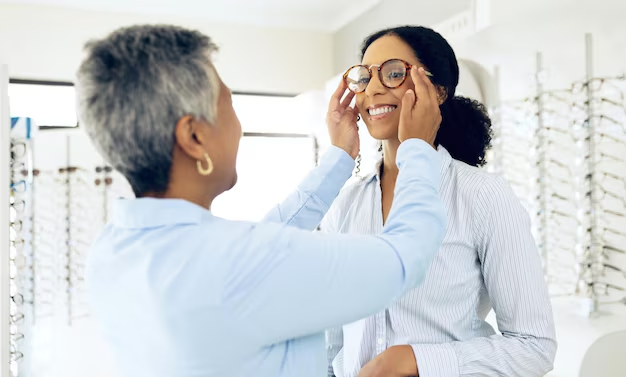When Can You Get New Glasses After Cataract Surgery? Insights and Guidance
Imagine the world around you suddenly appearing sharper, vibrant, and full of life once again. This is a common experience for many who undergo cataract surgery. However, one question looms large for most patients after surgery: "When can I get new glasses?" Let's explore this question in depth, guiding you through the entire process with clarity and understanding.
🤔 Why Are New Glasses Needed After Cataract Surgery?
Cataract surgery involves removing the cloudy lens of the eye and replacing it with an artificial one. While this procedure vastly improves vision, there's a period of adjustment. Here's why new glasses might be needed:
- Refined Vision Needs: Your eyesight will have changed post-surgery. The prescription that once fit your pre-surgery vision likely won't work well anymore.
- Healing Period: During the healing process, your vision can fluctuate. It's crucial to wait until these changes stabilize before investing in new glasses.
- Enhanced Focus: The implant may correct nearsightedness or farsightedness, but glasses might still be required for optimal near-vision or reading enhancement.
🕒 Timeline: How Long Should You Wait?
Understanding the timeline for getting new glasses is important to avoid unnecessary discomfort or frustration.
1. Immediate Post-Surgery (First Few Days):
- Visual Fluctuations: It's entirely normal for vision to be blurry or change slightly each day.
- Adjustment Phase: Allow your eyes to adjust to the new artificial lens. This period can initially be disorienting.
2. Short-term Recovery (First Few Weeks):
- Follow-ups with Your Specialist: Regular check-ups will ensure healing progresses without complications.
- Initial Prescription Glasses: Discuss with your doctor about temporary or over-the-counter reading glasses if necessary.
3. Intermediate Phase (4-6 Weeks):
- Vision Stabilization: For many, vision tends to stabilize around this time. Any inflammation or swelling is also likely to reduce.
4. Final Assessment (6-8 Weeks):
- Prescription Check: Most experts recommend waiting about this long to obtain a precise prescription for new eyeglasses.
- Final Eye Exam: Ensure this exam is carried out by a professional to determine your exact lens needs.
🔍 Factors Affecting Your Personal Timeline
Each individual's recovery can vary. Here are some common factors that may influence how soon you can get new glasses after cataract surgery:
- Healing Rate: Some people recover faster than others. Your body's healing response directly impacts stabilization time.
- Age and Health Conditions: Older age or pre-existing conditions like diabetes may slow down healing.
- Type of Lens Implant: Different lens types (monofocal, multifocal) affect depth perception and clarity differently.
- Adherence to Post-Op Care: Following post-operative instructions to the letter ensures a smoother recovery and accurate results.
📝 Navigating the Post-Surgery Landscape
Essential Post-Operative Care
While patience is key, certain post-operative care steps could hasten a positive outcome:
- Protective Eyewear: Use the protective shield provided for sleeping or when moving around where extra caution is needed.
- Avoid Strenuous Activities: Limit activities that strain the eyes, such as heavy lifting or high-impact sports, until allowed.
- Eye Drops and Medication: Follow the drop and medication schedule strictly to aid healing and reduce the risk of infection.
Common Experiences Post-Surgery
Understanding the common post-surgery experiences can help ground your expectations:
- Bright Glares and Halos: Some might experience glares or halos around lights, especially at night.
- Dry Eyes: Post-operative dry eyes are prevalent but generally temporary.
- Temporary Double Vision: In some cases, patients report seeing double or ghost images that clear over time.
🕵️♂️ When To Consult Your Eye Care Professional
Throughout this journey, you might find yourself with concerns or additional questions. Here are some instances where expert advice is crucial:
- Persistent Blurriness: If blurry vision persists beyond a few days, it’s worth consulting your specialist.
- Significant Pain or Discomfort: Any acute pain warrants professional attention to rule out complications.
- New Vision Symptoms: Sudden changes, such as flashes of light or dark spots, should be addressed promptly.
🌟 Key Takeaways: 📝
Here’s a handy summary for quick reference:
- 💡 Allow your vision to stabilize: Waiting 6-8 weeks is typical before getting new glasses.
- 🛡️ Follow post-operation care recommendations: They significantly impact recovery and final vision clarity.
- 🗣️ Regular follow-ups: Keep communication open with your eye care team for optimized recovery.
- 👓 Timing your investment: Avoid premature new glasses purchases until your prescription stabilizes.
- 🔍 Stay observant: Monitor any unusual symptoms or prolonged discomfort and seek professional advice.
This journey toward clearer vision is not just about restoring sight—it's also about enhancing your quality of life. With the right care and patience, you're well on your way to a seamless post-cataract experience. Remember that an informed and proactive approach makes all the difference.
Allow your renewed eyesight to guide you into seeing the world in vivid detail and with newfound wonder. From all the vibrant colors to the small prints on your favorite book, you'll soon cherish every visual moment even more.
